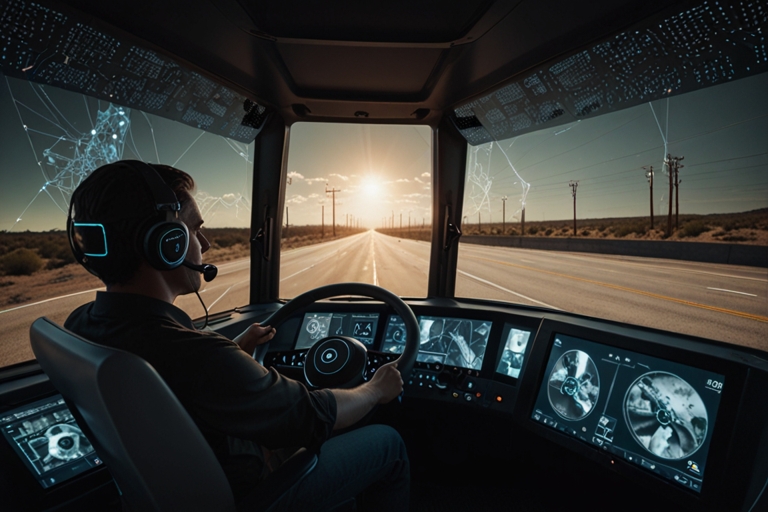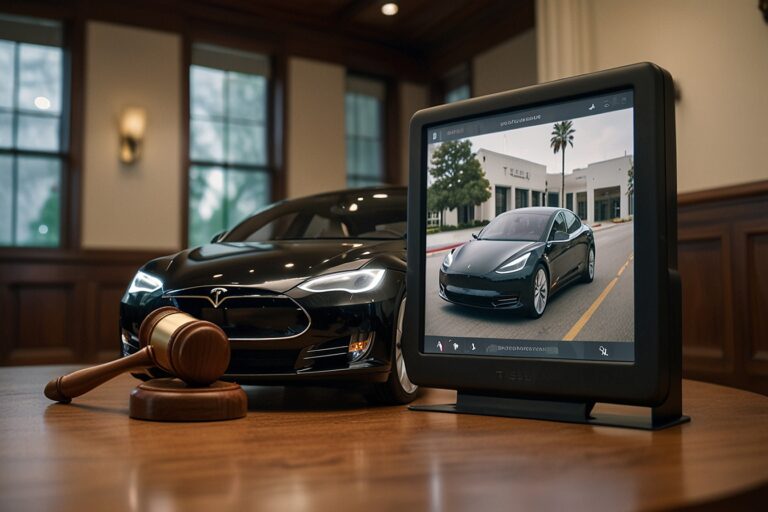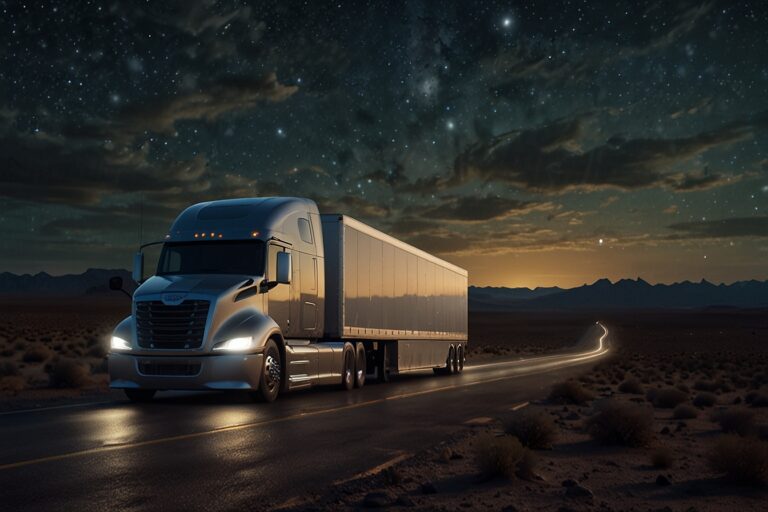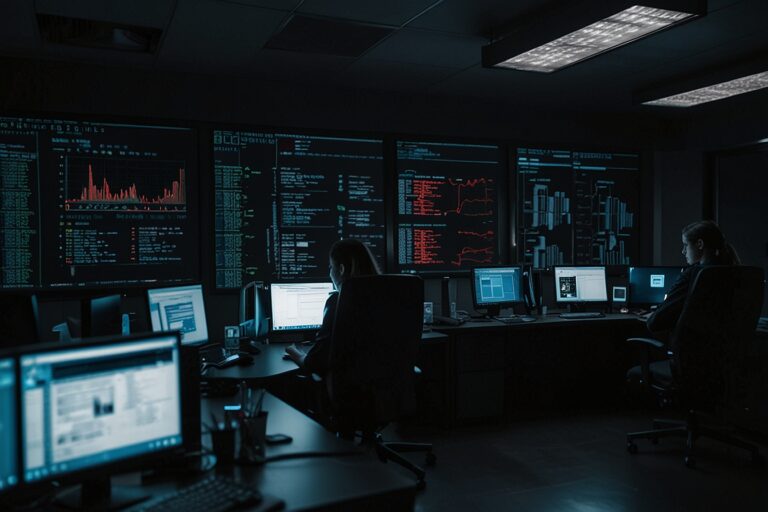
TL;DR
- Kodiak Robotics is partnering with Vay to integrate remote driving into its autonomous trucking system.
- Vay’s teleoperations technology enables trained operators to guide trucks through complex low-speed scenarios.
- The integration supports Kodiak’s “assisted autonomy” model, offering redundancy and increased operational safety.
- This development is critical ahead of Kodiak’s planned public highway deployments in Texas starting 2026.
- Vay’s tech has already been proven in over 10,000 commercial trips and expands Kodiak’s reach in logistics and military applications.
Kodiak Robotics Strengthens Autonomy with Vay Partnership
Kodiak Robotics is embedding remote driving into its autonomous truck fleet through a strategic partnership with Berlin-based Vay, a pioneer in remote vehicle operation. This collaboration enables teleoperation—remote human control—for scenarios where full autonomy may fall short.
As Kodiak prepares for public driverless delivery rollouts in Texas in late 2026, this added layer of control allows for greater flexibility and safety in navigating real-world environments such as construction zones, police checkpoints, or military terrain.
“There are always edge cases where human judgment still plays a crucial role,” said Don Burnette, CEO of Kodiak. “Assisted autonomy combined with remote support allows us to deliver freight more reliably.”
How Teleoperations Fits into Kodiak’s Strategy
Remote driving, or teleoperations, has been used by sidewalk delivery robots and autonomous shuttles. However, applying it to long-haul trucking presents new operational and safety challenges.
Kodiak began exploring the concept after securing a U.S. Army contract in 2022, which required autonomous systems capable of manual override in battlefield scenarios. Initially building an internal solution, Kodiak discovered that Vay had already deployed a scalable, commercial-grade teleoperations platform.
The result is a hybrid model: Kodiak’s “assisted autonomy” system remains in full control, while Vay’s human operators can input navigation assistance through a remote interface.
“You don’t just turn the steering wheel and override the system,” said CTO Andreas Wendel. “Our autonomy still runs all safety checks while interpreting the human input.”
How the Technology Works
Vay’s rig consists of:
- A steering wheel
- High-resolution monitors
- Low-latency communication systems
- Custom vehicle control software
This setup allows trained remote drivers to manipulate Kodiak trucks in low-speed scenarios without direct access to the vehicle. The system shines in situations like:
- Construction detours
- Law enforcement signal interpretation
- Military commands requiring quick deviation
Because Kodiak operates different vehicle types—from semis to F-150s—Vay’s platform is designed to deliver consistent control feel, regardless of load weight or configuration.
Kodiak + Vay Collaboration Highlights
| Metric / Feature | Detail | Source |
| Partnership Launch | 2024 (announced June 2025) | TechCrunch |
| Public Rollout Timeline | Commercial highway deliveries by H2 2026 | Kodiak |
| Remote Operation Use Cases | Construction zones, police control, military missions | TechCrunch |
| Remote Trip Experience (Vay) | Over 10,000 commercial remote trips | Vay |
| Driver Qualifications (Kodiak) | All operators hold commercial driving licenses | Kodiak |
| U.S. Army Contract Awarded | 2022, to develop remote-autonomous capabilities | DoD SBIR |
Strategic Implications for Commercial Deployment
The Vay integration enhances operational readiness as Kodiak scales its presence in Texas and potentially nationwide. Assisted autonomy supports:
- Seamless freight delivery across unpredictable highway and rural terrains
- Operational continuity in case of emergency or system uncertainty
- Military logistics, where autonomy alone may not suffice
Kodiak emphasizes that all remote operators are certified commercial drivers who undergo extensive scenario-based training.
Vay’s Broader Vision: From Consumer to B2B Services
Founded in 2019, Vay originally offered driverless car-sharing where vehicles are delivered remotely to users and picked up the same way. That model allowed Vay to refine its teleoperations platform, which has now evolved into a scalable B2B product.
“Think of us as the AWS of remote driving,” said CEO Thomas von der Ohe. “Just like Amazon built AWS from e-commerce success, we’re commercializing the underlying infrastructure.”
Since September 2024, Vay has been expanding its platform for use cases beyond car-sharing, including:
- Delivery logistics
- Warehouse automation
- Public transit alternatives
- Autonomous fleet support
Kodiak is the latest commercial partner to adopt the technology.
Industry Context: Why Human-in-the-Loop Autonomy Matters
Despite advances in autonomy, no system is fully infallible. Edge-case scenarios—such as hand gestures from police officers, ambiguous signage, or military maneuvers—continue to pose challenges.
That’s where human-in-the-loop design gains prominence. Instead of handing off full control, hybrid systems offer oversight, error correction, and human decision-making when needed.
“This approach buys us reliability while preserving autonomy,” said Wendel. “It’s a safety net that scales.”
Looking Ahead: Kodiak’s Public Markets Strategy
Kodiak’s decision to go public via SPAC in 2026 aligns with its deployment strategy. By the time it starts fully autonomous deliveries, Kodiak intends to be publicly listed — a timeline that could attract investor confidence and bolster commercial partnerships.
The partnership with Vay not only provides technical edge, but signals to investors that Kodiak has redundancy systems and human safety protocols already in place.
Final Takeaway
The Kodiak-Vay partnership showcases a pragmatic approach to autonomy. Rather than striving for a “driverless or bust” strategy, Kodiak is investing in layered autonomy — combining software, AI, and human operators to manage the real-world complexity of freight logistics.As competitors like Aurora, TuSimple, and Waymo Via navigate regulatory and technical hurdles, Kodiak is quietly building the operational infrastructure necessary to scale safely and sustainably.






